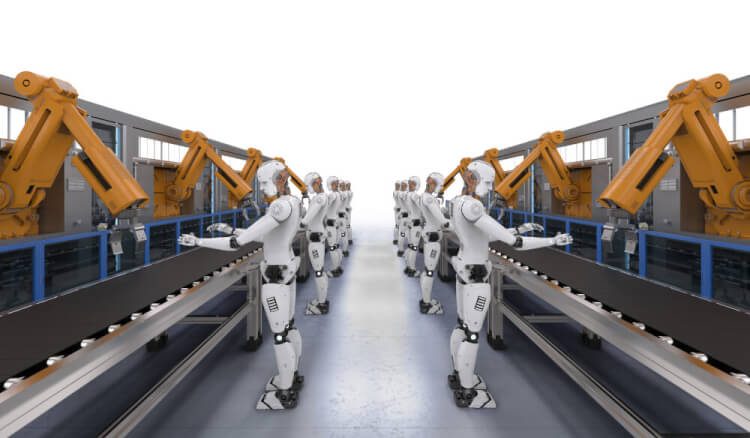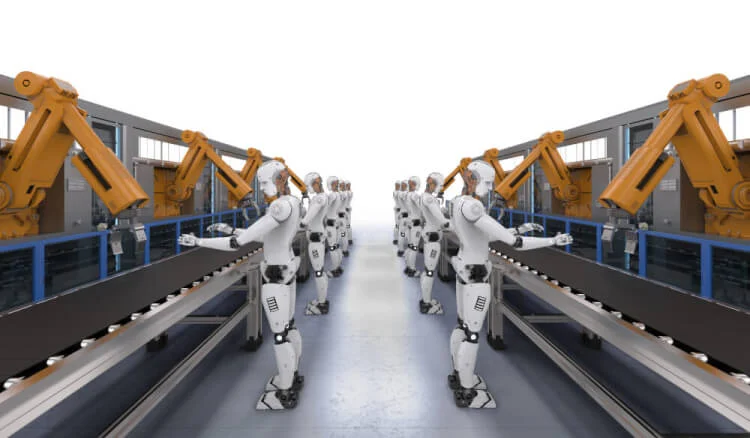In the manufacturing industry , the use of AI sales representatives is currently progressing in order to automate work and save labor in order to solve various problems associated with labor shortages. Salesperson Image recognition provided by Microsoft Salesperson Salesperson API Salesperson Salesperson who does not need to develop from scratch, such as “Salesperson Computer Vision API Salesperson” AI Salesperson Services that allow you to use this function have also appeared, and the hurdles for introducing AI sales staff are lowering. In this section, we will introduce the benefits that image recognition AI brings to the manufacturing industry.

- What can be achieved with image recognition using AI
- Discover insights
- Extracting text
- Benefits and examples of using image recognition AI in the manufacturing industry
- Automatic monitoring of work
- Reduce inspection costs
- Create a safe working environment
- summary
What can be achieved with image recognition using AI
AI (artificial intelligence) is generally defined as “artificially created human-like intelligence or the technology to create it,” and is a computer that can generate features from data and model phenomena. refers to
Much of the AI used in business is a method called “machine learning.” This is how computers learn by finding rules from the structured data they are given, that is, data that has been molded into a format that machines can understand. Deep learning, a type of machine learning technology, recognizes unstructured data such as audio and images using models such as RNN (recurrent neural network) and CNN (convolutional neural network).
In the 2010s, research on deep learning for image processing became active, and an era called the “Third AI Boom” has arrived. Along with this, practical applications have rapidly progressed, including speech recognition to determine what the voice is saying, image recognition to determine what the image depicts, and natural language processing to understand the meaning of sentences. , it has come to be widely used not only in research settings but also in business settings.
The field of image recognition in particular has a wide range of applications, and is expected to play an active role in the service industry, agriculture, fisheries, and even manufacturing.
One of the reasons for this is the worsening labor shortage in recent years. The problem of labor shortages is particularly noticeable in the manufacturing industry, and there is a growing movement to improve the working environment to secure human resources, and to introduce RPA, which allows robots to do tasks that computers can do, while leaving humans to work on high-value-added tasks. is. Furthermore, not only is the need for automation and labor-saving increasing, but there is also a movement to reduce working hours against the backdrop of work style reforms being promoted by the government. Automation using AI is attracting attention as a means to solve these problems.
To develop AI, we mainly use a programming language called “Python.” It is a popular language for AI and data analysis because it has a simple notation and is easy to understand, and the necessary functions can be called from outside as a framework library. AI is generally developed using libraries such as TensorFlow and Chainer in Python.
On the other hand, companies are starting to provide services that allow you to use AI without programming from scratch. For example, Microsoft offers a service called “Computer Vision.” This is provided within the company’s cloud service “Microsoft Azure,” and it can not only be used as an application, but also externally connected and used as an API. Computer Vision allows you to analyze what an image depicts and identify text within an image. Using these services makes it easier to introduce AI even for companies that do not have staff with specialized knowledge or cannot afford development costs.
Discover insights
Microsoft Azure’s image recognition API “Computer Vision API” can analyze an image and determine what it is. It is also possible to determine and detect which part of an image is a face, and to tag visual characteristics such as whether it is male or female, or how old it is. By applying this technology, you can easily investigate when and what kind of people visited the store from the footage from surveillance cameras installed in the store.
Extracting text
You can extract text from characters in images. Free handwritten text can also be recognized. Conventional character recognition technology is commonly called “OCR (Optical Character Recognition/Reader),” but it is difficult to recognize handwritten characters, and it is difficult to recognize characters on free layouts . There were various challenges, including difficulty with recognition. On the other hand, AI can learn to extract text even from handwritten characters.
In addition, the Computer Vision API can also recognize logo images in photos and videos to identify brands and identify adult content.
Benefits and examples of using image recognition AI in the manufacturing industry
In recent years, image recognition AI has been used in a variety of situations in the manufacturing industry. It is a system that acquires the current status by installing surveillance cameras and sensors, and uses AI to recognize and predict it, thereby automating tasks that were previously performed manually. It is mainly used for the following purposes and is highly effective.
Automatic monitoring of work
Surveillance cameras are installed in the factory and a large amount of footage is taken of the work process. AI learns from this data to understand the correct work procedure. This makes it possible to turn on a patrol lamp to alert workers when they take an unusual step. When work is done manually, there is always the possibility of forgetting tasks or making careless mistakes, so we can prevent this from happening by constantly monitoring the work with surveillance cameras.
An electronic equipment manufacturer has incorporated AI technology into the inspection of electronic components and has built a system that instantly detects abnormalities from images of circuit boards with countless components mounted on them. With predictions with a high accuracy of over 90%, we succeeded in significantly increasing the efficiency of inspections. The time required for each inspection is also significantly reduced, reducing the burden on workers and helping to prevent human errors caused by fatigue.
Reduce inspection costs
In conventional inspection work, experienced staff visually checked for defects. The reality is that as the work is done by humans, it is impossible to completely avoid omissions in checks and mistakes. However, with AI, it is possible to learn the “correct” state of a product in advance and detect products with characteristics that deviate from that state. It also has many other benefits, such as speeding up work and improving inspection accuracy, making up for most of the burden of inspection work.
One camera manufacturer switched to AI automatic inspection to check what was included in the product before shipping, and saw a significant time savings. Conventional manual work was time-consuming and prone to human errors due to the simple nature of the work, but with the introduction of AI, the number of errors has been reduced and labor costs have also been reduced. In this way, it can be seen that AI makes a significant contribution in terms of costs as well.
Create a safe working environment
The introduction of AI is also extremely effective in increasing safety at manufacturing sites. By installing surveillance cameras in your factory, you can prevent unauthorized intrusion and provide alerts to prevent unnecessary personnel from entering dangerous areas. In addition, it is also possible to obtain sound information from sensors installed on machines in factories, detect abnormal sounds, and predict machine failures. There are many machines in the factory that can lead to serious accidents if one mistake is made. It is no exaggeration to say that early detection of breakdowns and defects is essential to maintaining safety.
A machinery manufacturer has installed in-vehicle cameras on the forklifts that run within the factory, and is using AI to support safe driving. This system uses AI to check images sent from in-vehicle cameras in real time, identify and detect people and signs with a high accuracy of over 95%, and then alert the driver. These can also be linked with an emergency stop function, allowing autonomous driving. Furthermore, even if the layout of the factory or the design of signs changes, it can be handled using deep learning, so this is the most reassuring support.
Currently, most companies in the manufacturing industry are introducing AI for the purpose of improving operational efficiency and saving labor, which are likely to produce a return on investment. However, the use of AI to develop new services is expected to increase in the future.
summary
Image recognition technology is a field with high potential for use in the manufacturing industry. It is used for accident prevention, product inspection, and work monitoring. Currently, it is being introduced by major companies, but as the provision of sales representative AI sales representative services that can be used as a cloud service is increasing, in the future even companies with serious labor shortages such as small and medium-sized enterprises will be able to conduct sales operations. It is predicted that the introduction of AI sales representatives will progress.

